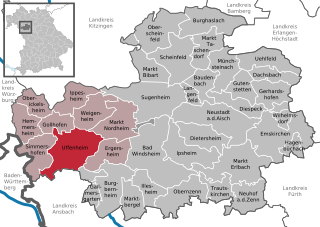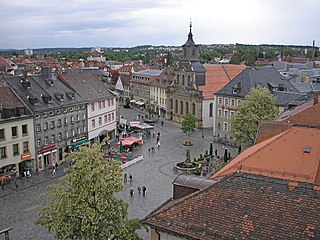
Bayreuth is a medium-sized city in northern Bavaria, Germany, on the Red Main river in a valley between the Franconian Jura and the Fichtelgebirge Mountains. The town's roots date back to 1194. In the early 21st century, it is the capital of Upper Franconia and has a population of 72,148 (2015). It is world-famous for its annual Bayreuth Festival, at which performances of operas by the 19th-century German composer Richard Wagner are presented.

The Bayreuth Festival is a music festival held annually in Bayreuth, Germany, at which performances of operas by the 19th-century German composer Richard Wagner are presented. Wagner himself conceived and promoted the idea of a special festival to showcase his own works, in particular his monumental cycle Der Ring des Nibelungen and Parsifal.

Cosima Wagner was the illegitimate daughter of the Hungarian pianist and composer Franz Liszt and Marie d'Agoult. She became the second wife of the German composer Richard Wagner, and with him founded the Bayreuth Festival as a showcase for his stage works; after his death she devoted the rest of her life to the promotion of his music and philosophy. Commentators have recognised Cosima as the principal inspiration for Wagner's later works, particularly Parsifal.

Charles Eugene, Duke of Württemberg, was the eldest son, and successor, of Charles Alexander; his mother was Princess Maria Augusta of Thurn and Taxis.
Count Georg Ludwig Friedrich Wilhelm zu Münster was a German paleontologist.

Charles, Duke of Brunswick-Lüneburg, reigned as Prince of Brunswick-Wolfenbüttel from 1735 until his death.

Carl Philipp Christian von Gontard was a German architect who worked primarily in Berlin, Potsdam, and Bayreuth in the style of late Baroque Classicism. Next to Knobelsdorff he was considered the most important architect of the era of Frederick the Great of Prussia.

Dörzbach is a town in the Jagst river valley in the Hohenlohe district of Baden-Württemberg, in south central Germany. It is also the site of 3 historic castles, the Chapel of St. Wendel, and a stone bridge built in 1808-1810 for King Frederick I of Württemberg. Records for the Dörzbach area date to 1230, but the modern incorporation was approved during 1972-74.

Albrecht von Eyb was one of the earliest German humanists.

The Prince-Bishopric of Bamberg was an ecclesiastical State of the Holy Roman Empire. It goes back to the Roman Catholic Diocese of Bamberg established at the 1007 synod in Frankfurt, at the behest of King Henry II to further expand the spread of Christianity in the Franconian lands. The bishops obtained the status of Imperial immediacy about 1245 and ruled their estates as Prince-bishops until they were subsumed to the Electorate of Bavaria in the course of the German Mediatisation in 1802.

Katharina Wagner is a German opera stage-director and co-director of the Bayreuth Festival. She is the daughter of Wolfgang Wagner, great-granddaughter of Richard Wagner, and great-great granddaughter of Hungarian composer Franz Liszt.

Wahnfried was the name given by Richard Wagner to his villa in Bayreuth. The name is a German compound of Wahn and Fried(e).

Georg Albrecht of Brandenburg-Bayreuth, was a German prince and member of the House of Hohenzollern.
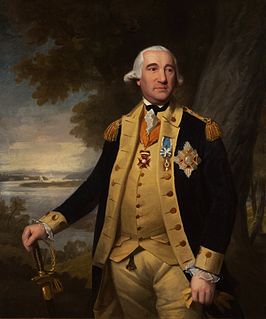
Ethnic Germans served on both sides of the American Revolutionary War. Many supported the Loyalist cause and served as allies of Great Britain, whose King George III was also the Elector of Hanover. Germans, particularly from the Rhineland region bordering the French kingdom commonly served in the Bourbon army. Other Germans came to assist the rebelling American patriots, but most of the Germans who were patriots were colonists.
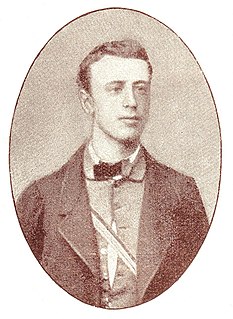
Eugen Ritter von Zimmerer was an attorney, prosecutor and judge in Bavaria before he entered the colonial service in 1887, when he was in his 40s. He served in German colonies of Kamerun and Togo before being appointed as governor of Kamerun, serving between 1890 and 1893. Following that, Zimmerer was assigned to posts in Brazil, Chile and Haiti before retiring and returning to Germany.

Princess Ernestine of Saxe-Weimar-Eisenach was a princess of Saxe-Weimar-Eisenach and by marriage Duchess of Saxe-Hildburghausen.

Friedrich August Valentin Voit von Salzburg was a commander of military units from Ansbach-Bayreuth. During the American Revolutionary War, the Kingdom of Great Britain purchased the services of soldiers from various German princes. Voit commanded the First Regiment of the Ansbach Regiment led by Friedrich Ludwig Albrecht von Eyb, designated the Voit Regiment. In May 1778, Eyb left and Voit took charge of the regiment. Also, he was in command of all Ansbach troops in North America by the time the war had ended.
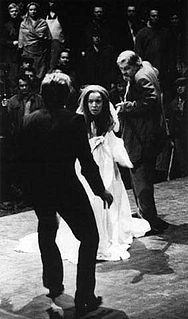
The Jahrhundertring was the production of Richard Wagner's Ring Cycle, Der Ring des Nibelungen, at the Bayreuth Festival in 1976, celebrating the centenary of both the festival and the first performance of the complete cycle. The festival was directed by Wolfgang Wagner and the production was created by the French team of conductor Pierre Boulez, stage director Patrice Chéreau, stage designer Richard Peduzzi, costume designer Jacques Schmidt and lighting designer André Diot. The cycle was shown first in 1976, then in the following years until 1980. It was filmed for television in 1979 and 1980. While the first performance caused "a near-riot" for its brash modernity, the staging established a standard, termed Regietheater, for later productions.


